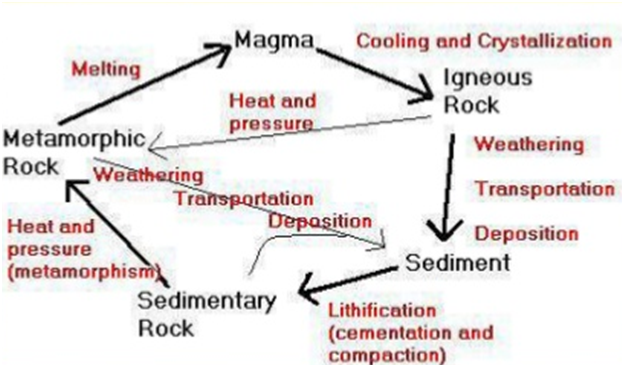Stones have been considered as one of the popular building material from the olden days due to their availability in abundance from the natural rocks. The historical use of stone related primarily to the proximity of the material resources to the places where these were needed and the ease of transport. Most stone was sourced locally.
India's long history, dating back to 3200 B.C., has been influenced significantly by the nature, development and use of stones and other construction materials have left deep imprints on the architectural heritage of the country. Innumerable temples, forts and palaces of Ancient Indian Civilization have been carved out of locally available stones. The Taj Mahal at Agra stands testimony to the age defying beauty of Indian marble. Some of the ancient rocks cut wonders are Khajuraho Temple, Elephanta Caves, Konark Temple, etc. Ancient Buddhist monuments like the Sanchi Stupa of 3rd century BC have also been carved out of stone. Besides, all major archaeological excavations have revealed exquisitely carved statuettes and carvings in Stone.
This tradition of Stone Architecture has continued to the 20th century with most of the important buildings in India like the Presidential House, Parliament House and Supreme Court made from high quality sandstone of Rajasthan. The Lotus Temple of New Delhi stands witness to the significance of marble in modern Indian architecture.

ADVANTAGES AND DISADVANTAGES OF STONE
In most areas where stone is available, it has been favoured over other materials for the construction of monumental architecture. Its advantages are durability, adaptability to sculptural treatment, and the fact that it can be used in its natural state. But it is difficult to quarry, transport, and cut, and its weakness in tension limits its use for beams, lintels, and floor supports.
TYPES OF STONE
a. Geological Classification
Stone is classified into three main groups based on their origin of formation as igneous rocks, sedimentary rocks and metamorphic rocks.


b. Physical Classification
Rocks can be classified based on their structure.
- Stratified rocks – are rocks that have layered in structure and possess planes and stratification or cleavage. They are easily split near these planes. Examples are sandstones, lime stones and slate.
- Unstratified Rocks – are not layered or stratified in structure. They cannot be split into thin slabs and possess crystalline and compact grains like granite and marble.
- Foliated Rocks – are rocks that have a tendency to split along a definite direction only and needs to be parallel to each other just like in stratified rocks. This is very common among metamorphic rocks.
AVAILABILITY OF STONE
In India stone quarries are mainly located in the states of in Rajasthan, Madhya Pradesh, Andhra Pradesh and few locations in Gujarat, Orissa, Karnataka, Tamil Nadu, Andaman and Nicobar, although they can also be found in many other places.


The stone is obtained from underground by a process of digging, blasting or cutting. This process is known as quarrying and the pit or open excavation from which the stone is obtained is called a Quarry. In the digging process when the stone in the form of raw material is obtained from the walls of the quarry, this is known as a vertical quarry. While when stone is gathered from the bed or floor of the quarry, this is known as a horizontal quarry.
The typical process after quarrying involves the following four steps:
• Dressing
• Cutting / sawing
• Surface grinding and polishing and
• Edge-cutting-trimming.
Once all processes are complete the stone is ready for shipping to the end user in the form of slabs, tiles, blocks, cobbles, bricks etc.
BIBLIOGRAPHY
- Ashurst, J. Cleaning stone and brick. (Technical Pamphlet N°4). London: Society for the Protection of Ancient Buildings, 1977.
- ICCROM, Scientific Principles of Conservation Course. Course exercises, 1977.
- Mora, P. and Mora-Sbordoni, L. Metodo per la rimozione di incrostazione su pietre calcaree e dipinti murali. In: Problemi di Conservazione, Bologna: Editrice Compositori, 1975, pp. 339-344.
- ICCROM, ARC laboratory manual for Architectural Conservators, Jeanne Marie Teutonico, Rome, 1988.
PUBLICATIONS
1. Stone Conservation: An Overview of Current Research, The Getty Conservation Institute.
http://www.getty.edu/conservation/publications_resources/pdf_publications/pdf/stoneconservation.pdf
2. Illustrated Glossary On Stone Deterioration Patterns, ICOMOS International Scientific Committee for Stone (ISCS).
3. Structural Conservation of Stone Masonry, International Technical Conference Athens, 31.X. — 3.XI.1989 ICCROM.
https://www.iccrom.org/sites/default/files/2018-02/1990_stone_masonry_athens_49219_light.pdf
4. Historic Stone Masonry Restoration, Journal of architectural technology published by Hoffmann Architects, Inc.
https://www.brikbase.org/sites/default/files/Vol-31-N2-Historic-Stone-Masonry.pdf

